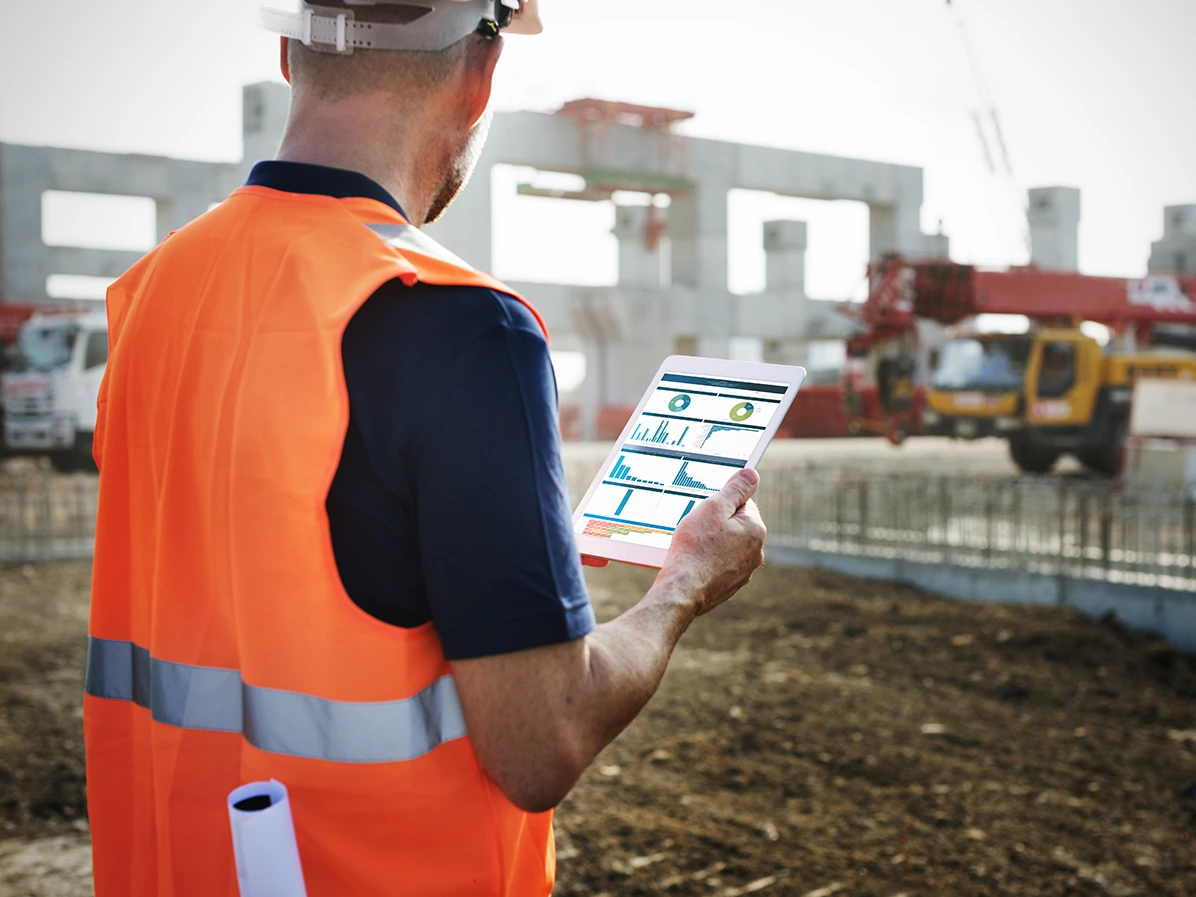Contents
AI & EHS: Finding the Balance Between Innovation and Environmental Responsibility
25 May 2023
Artificial intelligence (AI) is the hot topic on everyone’s mind right now. With its ability to revolutionize EHS processes beyond our imagination, we’re undoubtedly living in exciting times. But an over-reliance on AI could land us in hot water. Did you know that training just one AI model can emit as much carbon as five cars in their respective lifetimes?
While AI enhances health and safety professionals' ability to save lives, excessive use of it can have a major impact on the environment. In this post, we’ll explore the tension between innovation and environmental responsibility, and provide insights on how to use AI to enhance health and safety processes – without ignoring the big ‘E’ in EHS.
AI & EHS: Benefits and Concerns
There's no doubt the use of AI within EHS processes offers a range of benefits. Companies that have already weaved AI into their EHS processes have noted many advantages, including:
1. Better accuracy
AI can analyze worker health and safety data quickly and accurately to identify potential hazards and predict future risks that might be missed by human analysts.
2. More proactive safety measures
AI can help identify and prevent incidents before they occur. For example, it can analyze video feeds from security cameras to identify unsafe behaviors, including workers not using equipment properly. It can then send an alert to supervisors to take corrective action, reducing the risk of accidents and injuries.
However, as we delve deeper into the AI realm, we can't ignore the environmental concerns it raises. AI requires significant energy to operate, and that means potential greenhouse gas emissions.
Moreover, the rapid pace of technological advancement means that many AI devices can quickly be declared obsolete, giving way to e-waste. E-waste constitutes any bits of broken or unwanted electronics that are dumped in landfills, including plugs, cords and monitors. According to a sustainability report, e-waste weighing 9 million tons (four times the weight of the world’s tallest building), was disposed of in 2022 alone. E-waste will only increase with the use of AI, bringing along devastating consequences for the planet.
The Tension Between Innovation and Environmental Responsibility
Health and safety professionals have found themselves in a dilemma. On one hand, AI brings tremendous innovation to EHS, potentially saving countless lives. On the other, they must be responsible stewards of the environment. We do believe, however, in the ability to find a middle ground where innovation and environmental responsibility can coexist harmoniously.
That’s why striking a balance between both of these factors is so important. While adapting to the changing technology landscape is crucial, companies need to consider the negative impacts of AI on the environment and take steps to mitigate these impacts. By doing so, companies can ensure they’re getting the best possible use out of AI by using it to streamline their processes in a sustainable and responsible way.
Using AI Responsibly in EHS
AI is already making waves in various industries. In construction, AI can analyze wearable technology on workers (including sensors in clothing) to detect signs of worker fatigue and potential accidents. Whereas in transportation, AI can analyze sensor and camera data to identify hazards and alert drivers.
While these advances are certainly welcome, it’s important for companies to adopt strategies to minimize the environmental impact of AI in EHS. Some strategies include:
1. Embracing energy-efficient hardware
Opt-in for hardware that consumes less energy, such as low-power processors and energy-efficient servers. For instance, Google developed the game-changing Tensor Processing Unit that uses much less energy than traditional processors, reducing energy consumption significantly.
2. Reusing and recycling
Take a stand against e-waste; think sustainability! Establish comprehensive e-waste management programs and work with suppliers to ensure proper disposal. IBM, for example, has done just this to reduce the environmental impact of its products. It’s important to stay responsible and continue reducing your environmental footprint as new threats arise.
3. Cutting cloud computing
Instead of relying heavily on energy-intensive cloud computing, explore edge computing options. Processing data at the network's edge minimizes the need for massive data centers, slashing energy consumption and greenhouse gas emissions.
The pressure to adopt AI in EHS is mounting, and rightfully so. It has the potential to transform workplaces and safeguard workers' well-being. However, we can’t turn a blind eye to its environmental impact. By using AI responsibly, we can have our cake and eat it too – reaping the benefits of innovation while honoring our commitment to sustainability.
Want to learn more about how your organization can up its sustainability efforts? Check out our checklist: 10 Steps To Get Your ESG Program Started

RELATED BLOGS
How Emissions Tracking Software Can Transform Your Business
25 March 2024 - Team Evotix
When it comes to sustainability, we’ve got no more time to waste. Global warming is changing the planet and causing its temperature to rise by 0.36°F per decade. The time to act is now - to limit..

What is EHS Software? The Ultimate Guide
9 March 2022 - Team Evotix
The rate of workplace accidents is far too high. In fact, in some countries, it hasn’t been improving at all. Behind every one of those statistics is a name and a family – and that’s why at Evotix,..

Tips for Managing EHS With an Aging Workforce
18 April 2023 - Team Evotix
The concern around the impact an aging workforce has on the EHS space has been growing greater in recent years. As more workers approach retirement age and continue working into their 60s and 70s,..
